What's On Celebrations | Exhibitions | Biennale | Mostra Cinema
Celebrations Historical Regatta | Redentore | Salute | Vogalonga | Marathon | Marys | St Martin
Redentore Feast Fireworks | Writers Testimonies | Venetian Songs | Plague in Venice
The Plague in Venice: the Tragic Origin of the Redentore Feast
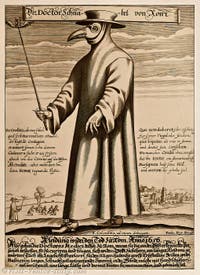
Doctor curing the Plague The Redentore celebration was established following the plague that ravaged the Venetian population from mid-June 1575 to December 1576.
Originally, Venetians went to the place on Saturday evening to be sure of having a seat to attend the Sunday religious ceremony.
The crowd waited on both banks of the Giudecca Canal, but also and above all, aboard boats on which we could have supper and pray together to Christ the Redeemer (Jesus who redeemed the sins of all mankind to spare him from damnation) to ask for his protection against divine wrath.
Plague, as a generic term bringing together all the epidemics wreaking havoc on populations, is, in fact, one of the signs of the end of the world:
“There will be great tremors and, in places, plagues, famines; there will be horrors and great signs in the sky.”
Gospel according to Luke, ch. XXI, 11.
June 1575: The Plague is in Venice
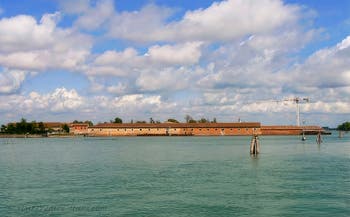
The island of Lazzaretto Vecchio The plague would have first appeared in Constantinople (Istanbul), then in Trento, to spread throughout Italy and Padua, where doctors had declared it not contagious!
And a commercial port in contact with the East like Venice could not escape it.
The epidemic began in Venice on June 25, 1575, with the death of a man in his thirties in San Marziale, in Cannaregio.
From August 1, 1575, to March 1, 1576, there were already 3,556 deaths.
Those who can, flee Venice in the face of the magnitude of the evil. The exodus was such that, on July 19, 1576, a decree prohibited all public officeholders from leaving their posts.
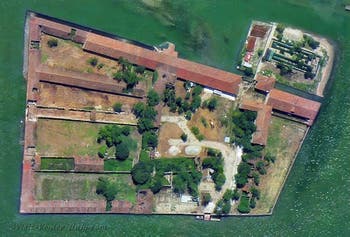
The island of Lazzaretto Vecchio A curfew is also imposed: no one can leave their home one hour after sunset.
Each Sestier (District) of Venice elected three noblemen responsible for carrying out all the health measures taken by the provveditori (officials) of public health.
Everything that has been in contact with patients is systematically burned, and the air is purified by burning juniper.
But what to do with these thousands of sick people and suspected cases?
To try to curb the disease, sick people and suspected cases are quarantined in the two Lazzaretti that the Republic of Venice then owned:
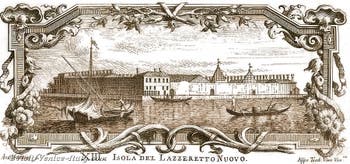
The island of Lazzaretto Vecchio - The Lazzaretto Vecchio (The Old Lazzaretto), located near the Lido, was originally created to house lepers, then became a place of isolation and treatment of sick people arriving by sea in order to avoid the risks of contagion with the population.
- The Lazzaretto Nuovo (The New Lazzaretto), located in front of the island of Sant'Erasmo, was created in the middle of the 15th century when the Lazzaretto Vecchio was no longer sufficient for the quarantine of men and goods returning from countries at risk.
During the terrible plague of 1576, the two hundred rooms in the Lazzaretti quickly became insufficient.
The Venetians nevertheless managed to organise themselves, and more than 3,000 patients suspected of contagion were welcomed there, including the poorest who received free care.
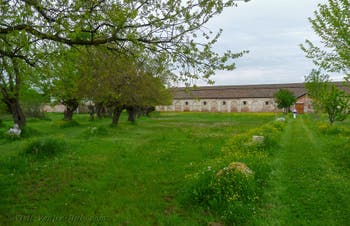
The island of Lazzaretto Nuovo But when the scourge reached its peak, more than 43,000 Venetians died in a single year, and the Lazzaretti could no longer be enough.
A huge floating Lazzaretto was then created, consisting of nearly three thousand boats of all sizes, firmly moored to each other.
These boats were also equipped to house, separately, beggars from other sick people because their poor living conditions made them more likely to contract the plague.
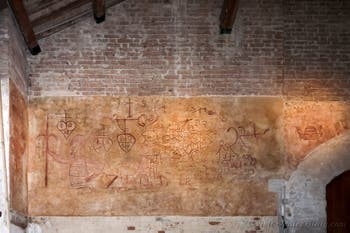
Drawings by plague victims Lazzaretto Nuovo Every morning, doctors and volunteers go from one boat to another to see if sick people are among the quarantined.
Declared plague cases are sent to Lazzaretto Vecchio, while suspected cases are referred to Lazzaretto Nuovo.
On the largest boat of the floating Lazzaretto flies a large flag as a sign prohibiting anyone from approaching.
And beware of those who want to escape from the Lazzaretto: soldiers' patrols circulate on the lagoon to capture the fugitives, and a boat equipped with a gallows is there to serve as a warning to all those who would be tempted to evade the rule!
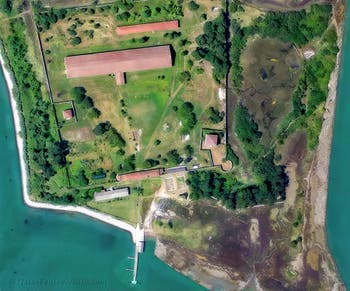
The island of Lazzaretto Nuovo But despite all these draconian measures, the ravages of the plague continue.
Among the numerous victims was the famous painter Tiziano Vecellio, known as Titian: he died on August 27 1576, and Venice offered him a solemn funeral despite the horror of the situation.
Faced with the impotence of the material resources put in place, all that remains is to implore divine power.
Venice is decimated; every day, Venice only mourns more dead people.
The Venice Prayer: The Origin of the Redentore Festival
In September 1576, Doge Alvise Mocenigo then expressed the wish to build a church dedicated to Christ, the Saviour, on the island of Giudecca, hoping that God would hear the prayer of Venice.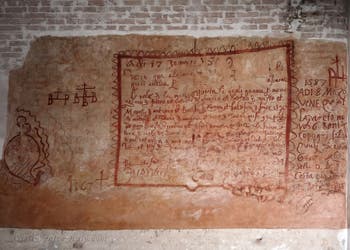
Drawings by plague victims Lazzaretto Nuovo The project was entrusted to the architect Andrea Palladio, who opted for an all-white facade symbolising purity.
God heard Venice's desperate call: on December 5, 1576, at last, the plague was in complete regression.
The church's first stone was laid on the island of Giudecca on May 3, 1577, by Doge Alvise Mocenigo and by the Patriarch of Venice, Giovanni Trevisan.
The church of Redentore will be built on the land of the Capuchin friars, where the small church of Santa Maria degli Angeli (Saint Mary of the Angels) was located.
Doge Alvise Mocenigo died on June 4, 1577, and was replaced by Sébastien Venier, the hero of the Battle of Lepanto.
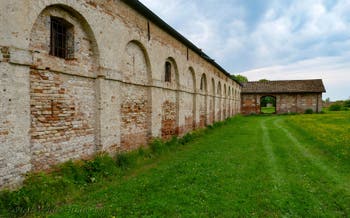
The island of Lazzaretto Nuovo On July 13, 1577, the epidemic was officially declared over.
On Sunday, July 21, 1577, the Doge, accompanied by all the dignitaries and people of Venice, crossed the Giudecca Canal in a procession on a boat bridge to give public thanks to the Redeemer.
An open-air altar was installed because the church was not yet built.
To celebrate the founding of the church of Redentore, Joseph Zarlino wrote a sung mass, and Andrea Gabrieli, who had composed the music for the big festival organised in honour of the visit to Venice of Henry III of France in 1574, wrote an eight-part motet: "O Crux Splendidor".
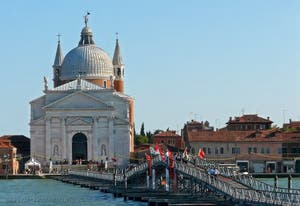
Redentore votive bridge an church Speaking of music, it should be noted that the church of Redentore was for a long time one of the rare Venetian churches to lack an organ because of the Capuchin Rule (to whom it had been entrusted since its consecration), which forbade musical instruments to them.
If it is now equipped with a Ruffatti organ, dating from 1955, with 2 keyboards and 14 registers, it is because it became a parish at the end of the Second World War.
In 1574, before the plague, Venice had 195,863 inhabitants. After the plague, there were only 134,800 left (these figures vary, however, depending on the author).
Redentore Feast Fireworks | Writers Testimonies | Venetian Songs | Plague in Venice
Celebrations Historical Regatta | Redentore | Salute | Vogalonga | Marathon | Marys | St Martin
What's On Celebrations | Exhibitions | Biennale | Mostra Cinema
Back to Top of Page

